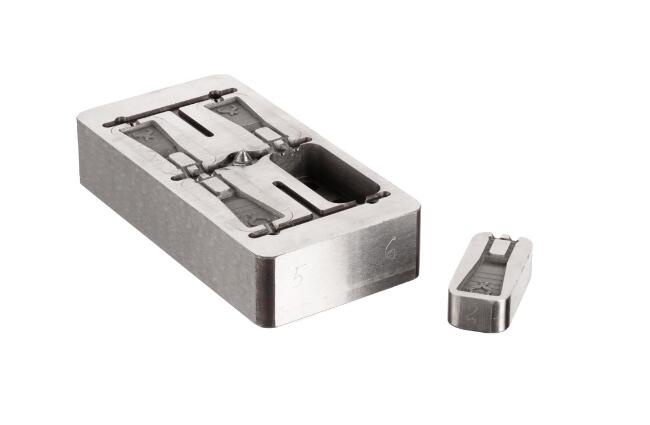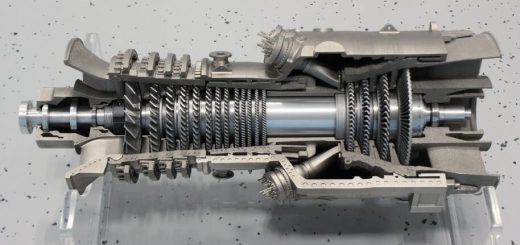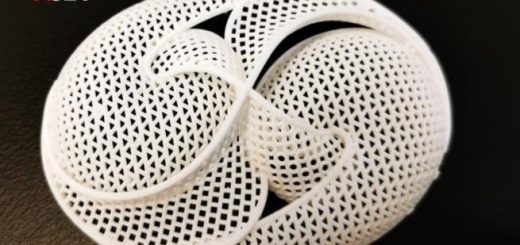Desktop Metal Expands Materials Portfolio with Launch of H13 Tool Steel for Both Hot and Cold Work Tooling Applications
On Sep.17, Desktop Metal, the company committed to making metal 3D printing accessible to engineers and manufacturers, announced the launch of H13 tool steel for the Studio System™, the world’s first office-friendly metal 3D printing system for prototyping and low volume production. Characterized by its stability in heat treatment, exceptional hot hardness, and abrasion resistance, H13 is a tool steel widely used in hot work applications. High toughness and hardness also make it an ideal metal for cold work tooling applications as well.
“Expanding the Studio System materials portfolio to include H13 tool steel enables designers and engineers to print mold inserts, extrusion dies, forging dies, and sheet metal tooling, including stamping, embossing, bending, and countersinking,” said Ric Fulop, CEO and co-founder of Desktop Metal. “This is a key competitive advantage to enable rapid iteration and refinement of tools requiring H13, and the reduction of manufacturing lead times. Teams will also be able to achieve complex geometries that have not been possible with traditional manufacturing methods like machining.”
 e
e
Early applications of H13 parts printed with the Studio System illustrate the benefits across a variety of industries:
![]() Medical: Mouthpiece Injection Mold Core
Medical: Mouthpiece Injection Mold Core
Injection mold cores are used for the molding of mouthpieces for asthma inhalers. H13 is an ideal material for this part due to its hot hardness and abrasion resistance. During the injection molding process, the cooling of a mold like this can traditionally account for up to 95 percent of the mold’s entire cycle time. By 3D printing the mold with the Studio System instead, the part can incorporate a conformal cooling channel that closely follows the molding surfaces profile, increasing the cooling rate of the mold. This dramatically reduces the mold’s cycle time, which may allow more parts to be molded every hour. Furthermore, 3D printing the mold to near net shape will reduce the wear on EDM tooling required to finish the mold, reducing both lead time and costs.
“Wear resistance, high hardness, toughness, and resistance to thermal fatigue are just a few of H13’s benefits. The downside was always getting a tool maker to want to work with it. Now that it is available with the Studio System, all of these same benefits will be ready to deploy to the shop floor in days rather than months,” said Chris Aiello, Operations Manager at Alpha Precision Group. “At Alpha Precision Group, our customers want to go to market faster. Design validation, biocompatibility, and market testing are just a few of the gates that our customers may need to pass; being able to get them there sooner by using printed H13 tooling and fixturing from the Studio System will be a significant competitive advantage.”
![]() Industry: Extrusion Die
Industry: Extrusion Die
The complex geometry of an extrusion die often makes it a difficult part to machine. This limits the ability of manufacturers to iterate on the extrusion die design, due in part to the high lead time and cost of machining. At the same time, the part must be able to withstand the extreme temperatures and pressures required to successfully push molten materials through the extrusion die. 3D printing in H13 tool steel enables design teams to quickly and easily produce dies featuring complex extrusion profiles previously unattainable via machining.
![]() Fashion/Consumer Products: Zipper Die Casting Mold
Fashion/Consumer Products: Zipper Die Casting Mold
This part is used to mold a zinc zipper that is then attached to an article of clothing. The mold features numerous fine details, such as a logo, textures, and subtle draft angles that are critical to the part’s molding success. By 3D printing with the Desktop Metal Studio System high resolution nozzle, users can achieve the fine details required for this part and also save valuable time and costs compared to traditional methods of machining the mold. What’s more, H13’s hot work capability enables fabricating molds for die casting applications.
“In my experience, 3D printing H13 for sheet metal forming tools and stamping is an opportunity for a competitive advantage that will be hard to match,” said Steve Lynch, Director of Business Development at Macy Industries, Inc. “Breaking the norm of how stamping dies are designed and created will be a huge step for engineering, reducing the time and cost for prototyping new ideas.”
H13 is the latest addition to the Studio System materials library, which also includes 316L and 17-4 PH stainless steels. Desktop Metal plans to introduce additional core metals to its portfolio, including superalloys, carbon steels and copper.
Source:Desktop Metal




Recent Comments